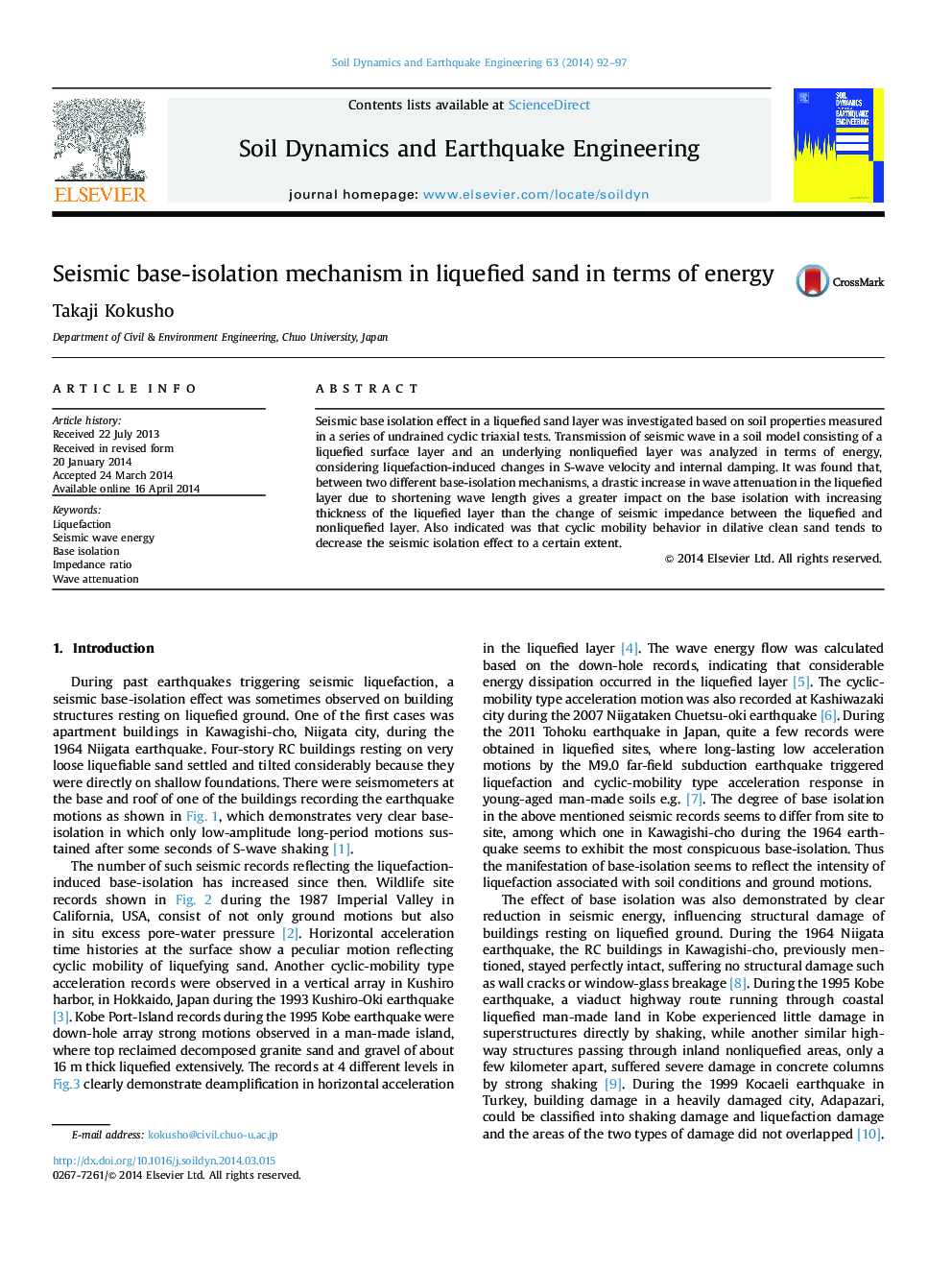| Article ID | Journal | Published Year | Pages | File Type |
|---|---|---|---|---|
| 304140 | Soil Dynamics and Earthquake Engineering | 2014 | 6 Pages |
•A basic mechanism of liquefaction-induced base-isolation studied using laboratory soil data.•BI-mechanism works either (a) at the boundary or (b) in the liquefied layer.•Mechanism (b) tends to be more dominant than (a) with increasing liquefied layer thickness.•Shortening wave length by decreasing Vs causes increase of wave attenuation in (b).•Perfect BI is more difficult to occur in clean sand than contractive sand with fines.
Seismic base isolation effect in a liquefied sand layer was investigated based on soil properties measured in a series of undrained cyclic triaxial tests. Transmission of seismic wave in a soil model consisting of a liquefied surface layer and an underlying nonliquefied layer was analyzed in terms of energy, considering liquefaction-induced changes in S-wave velocity and internal damping. It was found that, between two different base-isolation mechanisms, a drastic increase in wave attenuation in the liquefied layer due to shortening wave length gives a greater impact on the base isolation with increasing thickness of the liquefied layer than the change of seismic impedance between the liquefied and nonliquefied layer. Also indicated was that cyclic mobility behavior in dilative clean sand tends to decrease the seismic isolation effect to a certain extent.
